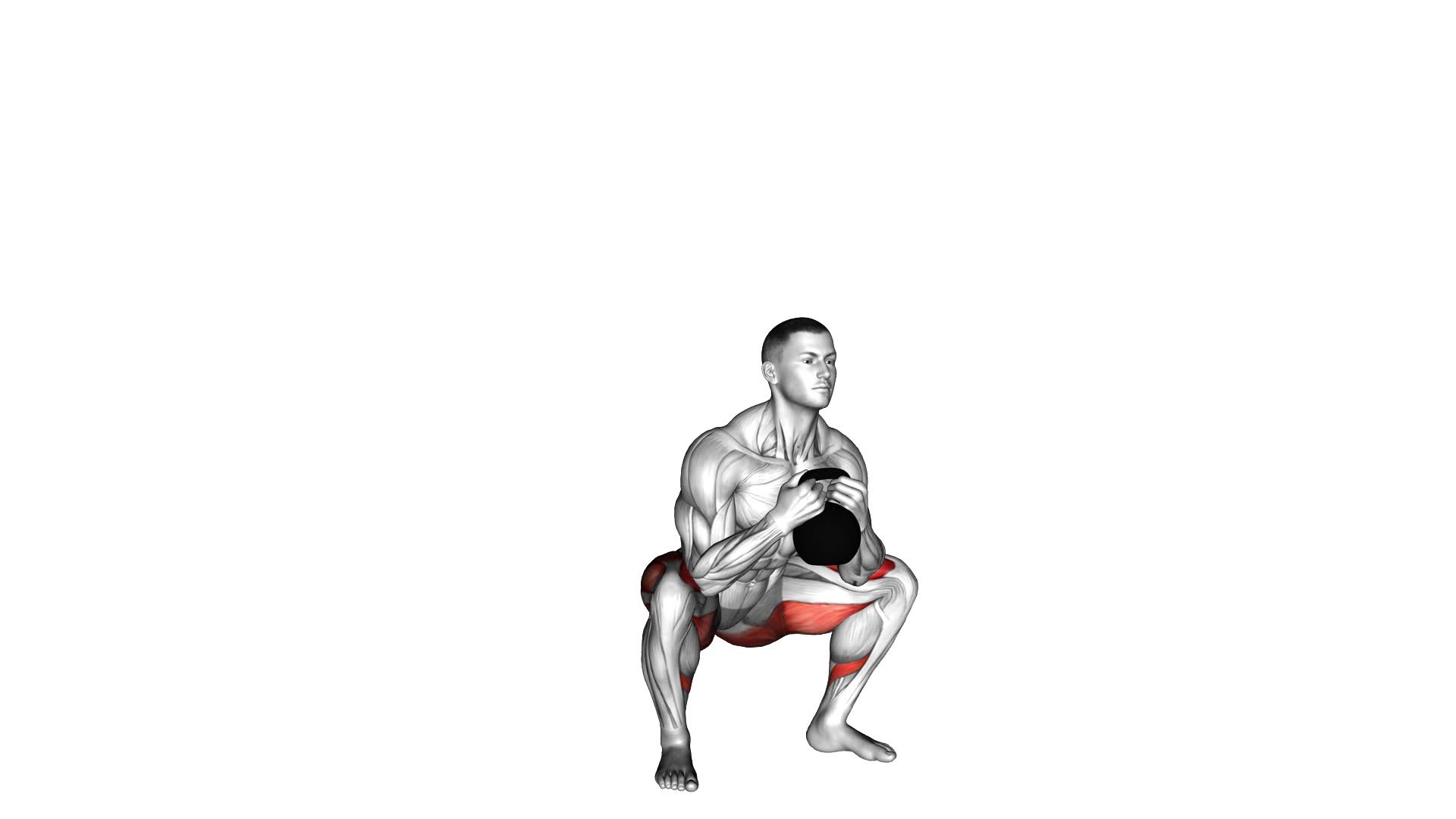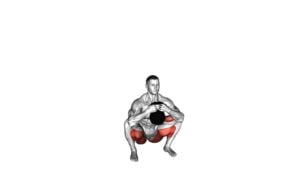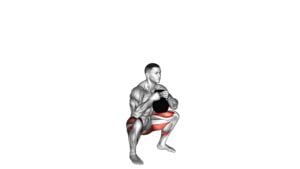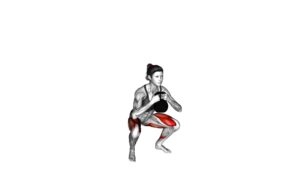Kettlebell Goblet Squat – Video Exercise Guide & Tips

Are you looking for a highly effective lower body exercise that can be done with just one piece of equipment? Look no further than the kettlebell goblet squat!
Watch This Exercise Video
In this video exercise guide, we'll show you the proper form and technique to maximize your results. Plus, we'll share common mistakes to avoid and variations for progression.
Get ready to feel the burn and strengthen your legs, glutes, and core with this challenging yet rewarding exercise. Let's get squatting!
Key Takeaways
- Kettlebell Goblet Squat combines strength training with core stability
- Proper form and technique are crucial to avoid injury
- Common mistakes to avoid include rounding the back and allowing knees to collapse inward
- Variations and progressions can help challenge the body and prevent plateaus
Benefits of the Kettlebell Goblet Squat
To understand the benefits of the Kettlebell Goblet Squat, you need to know that it combines strength training with core stability. This exercise is highly effective for muscle activation and improving core stability. When performing the Kettlebell Goblet Squat, the weight of the kettlebell in front of your chest forces your core muscles to work harder to maintain balance and stability. This results in increased activation of the muscles in your abdomen, lower back, and hips.
The Kettlebell Goblet Squat specifically targets your quadriceps, hamstrings, and glutes, making it a great exercise for building lower body strength. Additionally, it also engages your upper body muscles, including your shoulders, arms, and chest, as you hold the kettlebell close to your body during the squat.
By incorporating the Kettlebell Goblet Squat into your workout routine, you can improve your overall strength, stability, and balance. This exercise not only strengthens your muscles but also improves your posture and promotes better movement patterns. It's a versatile exercise that can be modified to suit different fitness levels and goals.
Proper Form and Technique
When performing the Kettlebell Goblet Squat, it's important to maintain proper form and technique to maximize the benefits of the exercise. To ensure you're doing the exercise correctly, there are a few key points to keep in mind.
First, focus on your posture. Stand with your feet shoulder-width apart and toes slightly turned out. Keep your chest up and maintain a straight back throughout the movement. This will help engage your core and protect your lower back.
Next, hold the kettlebell close to your chest with both hands, using a grip that feels comfortable for you. This is the starting position for the exercise.
As you begin the squat, lower your body down by bending at the knees and hips, as if you were sitting back into a chair. Keep your weight on your heels and your knees in line with your toes. Aim to lower your hips until your thighs are parallel to the ground.
Common errors to avoid include rounding your back, leaning too far forward, or allowing your knees to collapse inward. Maintaining correct posture and technique will ensure you get the most out of the Kettlebell Goblet Squat and minimize the risk of injury.
In the next section, we'll discuss some common mistakes to avoid when performing this exercise.
Common Mistakes to Avoid
To maximize the benefits of the Kettlebell Goblet Squat and prevent injury, it's important to be aware of common mistakes and avoid them during the exercise.
One common mistake to avoid is rounding your back. Proper technique requires maintaining a neutral spine throughout the movement. Rounding your back puts excessive strain on your lower back and increases the risk of injury.
Another mistake to avoid is leaning too far forward. While it's natural to lean forward slightly during the squat, leaning too far forward can shift the load onto your lower back and knees, increasing the risk of injury.
Additionally, be careful not to let your knees cave inwards. Your knees should be in line with your toes throughout the movement to prevent strain on the knee joint.
Finally, avoid using too heavy of a kettlebell. Using a weight that's too heavy can compromise your form and increase the risk of injury. Start with a lighter weight and gradually increase as your form improves.
Variations and Progressions
Now, let's explore some variations and progressions to further challenge and enhance your Kettlebell Goblet Squat.
If you're looking for advanced modifications, one option is to increase the weight of the kettlebell. This will intensify the exercise and engage your muscles even more.
You can also try performing the squat on an unstable surface, such as a balance board or Bosu ball, to challenge your stability and core strength.
Another variation is to add a plyometric element to the squat by incorporating a jump at the top of the movement. This won't only increase the difficulty but also enhance your power and explosiveness.
In terms of equipment options, if you don't have access to a kettlebell, you can use a dumbbell or a medicine ball instead. Both of these alternatives will still provide a similar stimulus to your muscles.
By incorporating these variations and progressions into your Kettlebell Goblet Squat routine, you can continue to challenge your body and prevent plateaus.
Now, let's move on to the next section where we'll discuss some tips for maximizing your results.
Tips for Maximizing Results
To optimize your results, focus on incorporating these tips into your Kettlebell Goblet Squat routine:
- Nutrition tips for muscle growth:
- In order to maximize your results, it's important to fuel your body with the right nutrients.
- Make sure you're consuming enough protein to support muscle growth and repair.
- Additionally, incorporating carbohydrates and healthy fats into your diet will provide you with the energy needed to perform your workouts and recover properly.
- Stay hydrated and consider adding supplements such as creatine or branched-chain amino acids to support muscle recovery and growth.
- Importance of rest and recovery for optimal results:
- While it may be tempting to push yourself to the limit every day, it's crucial to allow your body time to rest and recover.
- Your muscles need time to repair and rebuild after intense workouts.
- Incorporate rest days into your training schedule and prioritize getting enough sleep each night.
- Additionally, consider incorporating active recovery techniques such as foam rolling or stretching to help alleviate muscle soreness and improve flexibility.
Frequently Asked Questions
How Much Weight Should I Use When Performing the Kettlebell Goblet Squat?
When performing the kettlebell goblet squat, it's important to choose an appropriate weight. Start with a weight that challenges you but allows you to maintain proper form throughout the exercise. Gradually increase the weight as you become more comfortable and confident. Remember, improving form is key to getting the most out of this exercise.
Additionally, you can try different variations of the goblet squat to target different muscle groups and add variety to your workouts.
Can the Kettlebell Goblet Squat Help Improve My Flexibility?
The kettlebell goblet squat can definitely help improve your flexibility. By performing this exercise regularly, you can increase the range of motion in your hips, knees, and ankles. This won't only make your squatting technique more efficient, but it will also benefit your overall mobility.
The goblet squat engages multiple muscle groups, promoting flexibility throughout your lower body. So, if you're looking to improve your flexibility and reap the benefits of the kettlebell goblet squat, give it a try!
Is It Necessary to Warm up Before Doing the Kettlebell Goblet Squat?
Before diving into the specifics of the Kettlebell Goblet Squat, let's address the importance of warming up.
It's necessary to warm up before performing this exercise to prepare your muscles and joints for the movement. However, if you're looking for alternatives, you can try dynamic stretches or light cardio exercises.
Warming up helps prevent injuries and improves the effectiveness of your workout.
The Kettlebell Goblet Squat itself offers numerous benefits, such as targeting multiple muscles and improving overall strength and stability.
Will the Kettlebell Goblet Squat Help Me Build Muscles in My Upper Body?
The kettlebell goblet squat is a great exercise for building muscles in your upper body. It targets your arms, shoulders, and core while also working your legs.
To get the most out of this exercise, make sure to learn the proper form and technique. There are also variations of the kettlebell goblet squat that are suitable for beginners.
Incorporate these variations into your workout routine to gradually build strength and muscle in your upper body.
Can the Kettlebell Goblet Squat Be Modified for Individuals With Knee or Hip Injuries?
If you have knee or hip injuries, you might be wondering if the kettlebell goblet squat can be modified for you. Well, good news!
This exercise can actually be beneficial for knee rehab. By using a lighter kettlebell or even just your body weight, you can work on strengthening your lower body without putting too much strain on your joints.
Plus, the goblet squat targets your quads, glutes, and core, making it a great exercise for athletes.
Conclusion
In conclusion, the kettlebell goblet squat is a highly effective exercise for strengthening the lower body and core muscles. By maintaining proper form and technique, and avoiding common mistakes, you can maximize the benefits of this exercise.
Additionally, incorporating variations and progressions can help challenge your muscles and continue to improve your strength.
Remember to follow the tips provided to ensure you get the most out of your kettlebell goblet squat workouts.

Author
Years ago, the spark of my life’s passion ignited in my mind the moment I stepped into the local gym for the first time. The inaugural bead of perspiration, the initial endeavor, the very first surge of endorphins, and a sense of pride that washed over me post-workout marked the beginning of my deep-seated interest in strength sports, fitness, and sports nutrition. This very curiosity blossomed rapidly into a profound fascination, propelling me to earn a Master’s degree in Physical Education from the Academy of Physical Education in Krakow, followed by a Sports Manager diploma from the Jagiellonian University. My journey of growth led me to gain more specialized qualifications, such as being a certified personal trainer with a focus on sports dietetics, a lifeguard, and an instructor for wellness and corrective gymnastics. Theoretical knowledge paired seamlessly with practical experience, reinforcing my belief that the transformation of individuals under my guidance was also a reflection of my personal growth. This belief holds true even today. Each day, I strive to push the boundaries and explore new realms. These realms gently elevate me to greater heights. The unique combination of passion for my field and the continuous quest for growth fuels my drive to break new ground.



